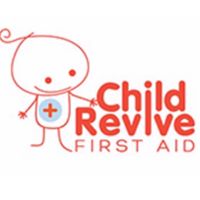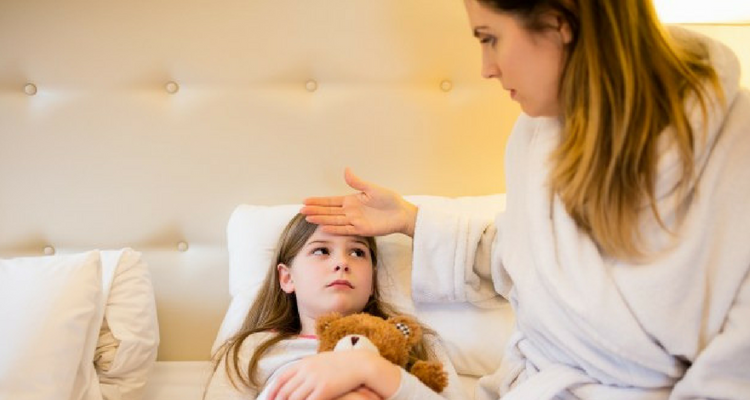Childhood illness and the odd accident is a given when bringing up children, therefore it’s important for parents to have their first aid up to date. When I was pregnant with my first child, I felt that it was vital for me and my partner to attend a child focused first aid course and this is how I discovered Child Revive first aid.
Child Revive First aid was founded in 2010 by Amanda Thornton who was on leave as an Ambulance Paramedic and First Aid Instructor after the birth of her second child. During her time at playgroup, Amanda became aware of the concern and anxiety held by many parents when it came to their child’s health in an emergency so, Amanda set out to develop a training program to assist the parents in her local community and since then it has grown throughout Melbourne, regional Victoria and Interstate.
Child revive first aid offers first aid training for parents and carers that covers a range of topics specific to infants and children. The courses run for no more than 3.5 hours which makes it easy for new parents to fit it into life with a new baby. It includes hands-on practical CPR and choking management training including a range of videos and real case examples to educate families on topics such as fever, seizures, breathing infections, allergies, burns, head injuries and more. The best part of their courses is that they are all conducted by Paramedics and Paediatric Nurses who all come with years of experience caring for sick children.
Amanda and her team have a goal for everyone who attends their course to come out with an overall sense of increased confidence so that if an emergency occurs they will be able to take action and assist their child
Tackling fevers in children.
A fever can be very scary for most parents but it’s important to know that fevers are the bodies way of fighting the infection. Yes, fever is the elevation of the body’s internal temperature above 38°C and it forms part of the body’s natural defence against viruses and bacteria. By creating a hotter internal environment these infective organisms cannot multiply and cannot survive.
What should you do when your child has a fever?
It is important to remember that fever is not an illness but a sign that your child has an infection. Therefore, the focus should be on identifying what type of infection the child has and how it is affecting them rather than the recorded temperature.
The aim is to keep the child comfortable and well hydrated when they are unwell and not focusing on treating or ‘breaking’ the fever. For example, the parent may reduce the amount of clothing on the child if they are in layers and overdressed. As well as offering frequent but small sips of fluid. The most important thing is to reassure and comfort the child and allow them time to rest at home.
The Royal Children’s Hospital only recommends giving Children’s Paracetamol or Ibuprofen when the fever is above 38.5oC and the child is in discomfort or pain. If a child is relatively comfortable there is no need to give either of these medications.
When is it important to seek medical attention?
It is important to see a local doctor if at any time the parent is genuinely concerned. This may be because the child has pain that ongoing or recurring or the child is suspected of being dehydrated. Most infections in children are caused by viruses which don’t respond to antibiotics however if the parent believes the infection to be likely bacterial then it is recommended to see a doctor. Otherwise it is a good idea to see the doctor if the fever has been present for two or three days. However, in infants aged under 3 months who have fever it is recommended that they be assessed in hospital.
If the child is seriously unwell, (floppy, drowsy or difficult to rouse or if they have poor skin colour or are working hard to breath,) call 000 immediately.
Old-school methods of dealing with a fever that can cause more harm than good?
Many people believe a fever is harmful for the child. However, we now know this to be untrue as fever is a natural part of the body’s defence against infection and is not harmful.
Old-school strategies were focused on cooling the outside of the body which included sponging or bathing the child in a cool or tepid bath, undressing the child entirely, fanning the child or taking them outside in the cool air. The problem with these strategies is that they work to only cool the outside of the body. Fever is internally controlled and cooling the outside will only result in the child shivering and warming themselves up further as the body wants to be at this higher temperature to fight the infection.
Many parents are also focused on treating the fever with medicines such as Paracetamol and Ibuprofen however it is not recommended for parents to administer these medications for fever alone as the aim is not to stop the fever but instead make the child more comfortable which is why they are only recommended when the child is in pain or discomfort.
What do I do if my child suffers from a febrile convulsion?
A febrile convulsion is a benign, generalised seizure caused by a sudden change in body temperature. These seizures rarely occur in children who have a prolonged or gradual elevation in temperature, rather they occur when the body temperature rises rapidly.
There is nothing parents can do to prevent this type of seizure from occurring. Often parents are not even aware that their child has an infection or fever prior to the onset of the seizure. They are short in duration usually lasting less than 5 minutes and usually stop on their own. During the seizure it is ideal if the parent can place the child on their side (recovery position) on the floor and time the seizure. If it is the child’s first seizure, then they can call Triple Zero (000) for an Ambulance. After the seizure it is important to ensure their airway remains clear, so it is recommended to keep them on their side until they are alert enough that they begin to reach out for a cuddle and reassurance. Otherwise the parent should just be monitoring their breathing after the seizure. It is extremely rare for a child has had a febrile convulsion to not have effective breathing.
About 1 in 30 children will have a Febrile Convulsion between the ages of 6 months and 6 years of age. These seizures are considered benign as they are not harmful to the child’s brain (unless injuries are sustained during the seizure) and are not linked to epilepsy.
Check out Child Revive First Aid for further first aid information,

http://www.childrevive.com.au/
You may also like to read:
Top Ways to be Prepared for a First Aid Accident
Kiddipedia welcomes KidzAid Australia









